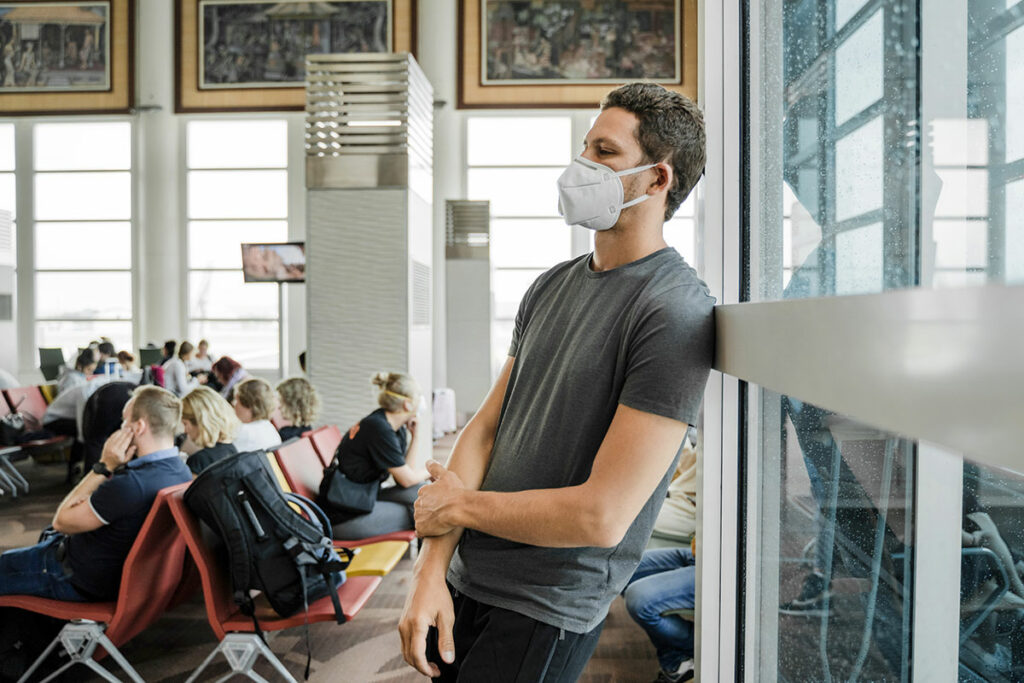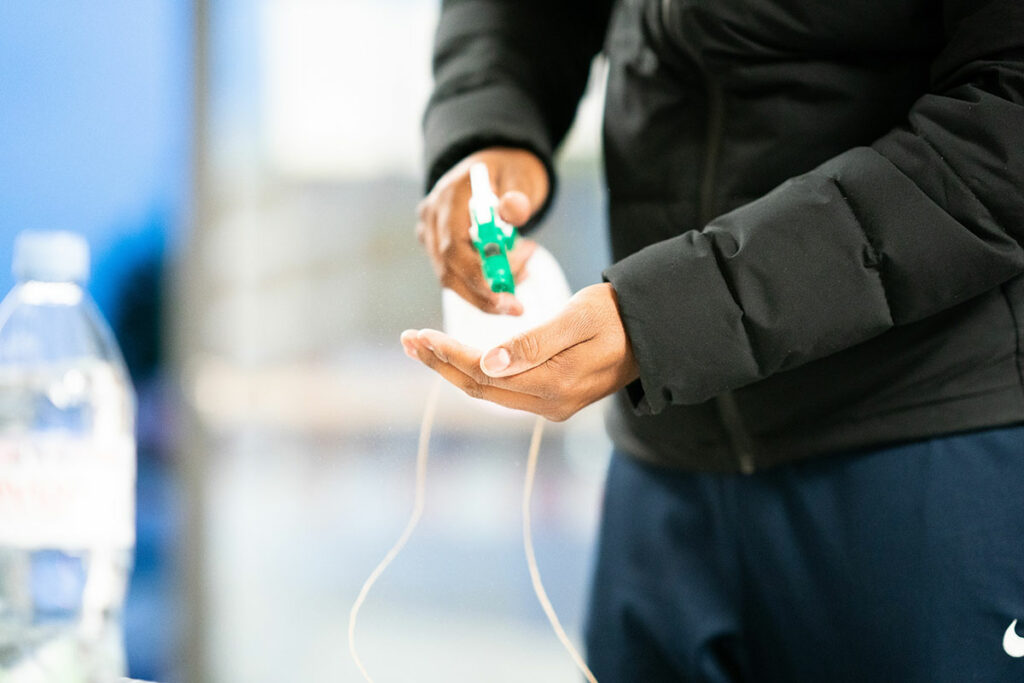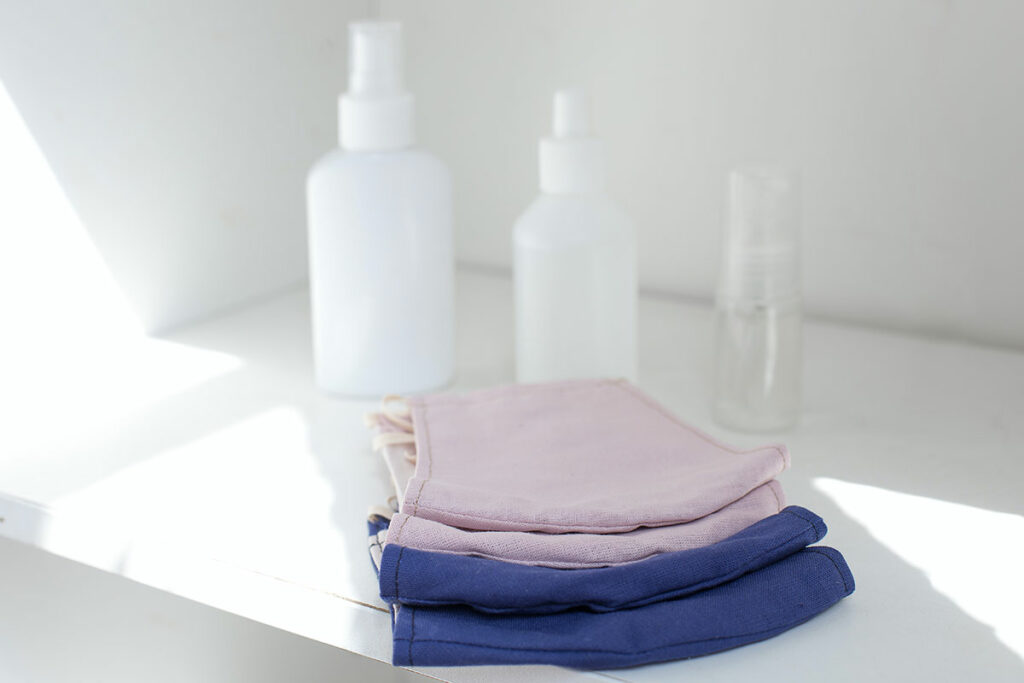The COVID-19 Travel Bag
Taking a trip? Bring a COVID-19 travel bag with you. Here’s what Global Rescue experts recommend to reduce the risk of coronavirus.
How many items do you touch during the day? If you’re at home, the list might include door handles, appliances, faucets, counters, light switches, knobs, drawer pulls, chairs, tables, utensils, pens and pencils, your phone, television remote and computers.
When you venture outside, the list gets longer. Add elevator buttons, door handles, ATM screens, check out key pads, gas pumps — and more people are touching the things you are touching. It multiplies exponentially, especially if you are traveling overseas.
A study by The New England Journal of Medicine found the coronavirus lasted on plastic and steel for up to 72 hours, cardboard for up to 24 hours and copper for up to four hours. Of course, it’s not the main way the virus spreads — that’s due to coughs and sneezes — but it’s part of the problem.
A Global Rescue survey found 77 percent of respondents are planning a trip by October. How can you stay safe? Following protocols is the best protection against personal infection.

Global Rescue experts have compiled some suggestions to reduce the risk of coronavirus contagion.
TRAVEL CORONAVIRUS KIT
These three items are a must-have on any trip in today’s coronavirus world.
Masks
You and your traveling party will be wearing a mask and you all should carry a few spares. Make certain it covers your nose and mouth.
Hand sanitizer
If you have to touch a surface, use hand sanitizer immediately after. According to the CDC, effective hand sanitizer is at least 60 percent alcohol (70 percent isopropyl alcohol).
You can now bring more with you when you fly. The Transportation Security Administration eased the 3-ounce limit and is allowing passengers to bring up to 12 ounces of liquid hand sanitizer in carry-on bags.
Disinfectant wipes
You can remove the virus from surfaces by using bleach-based cleaners or hydrogen-peroxide based cleaners. You can make your own travel packs by stacking wipes into resealable plastic bags.
AIRPORT CORONAVIRUS KIT
The airport is full of high-touch surfaces. Keep these three items in your purse, jacket pocket or carry-on bag:
More disinfectant wipes
Avoid touching surfaces with your fingertips. Your fingertips are most likely to transmit a virus because they’re the part most often used to touch your face, eyes, nose or mouth. You’ll be using disinfectant wipes throughout the airport as well as once you board the plane to wipe down your seat, arm rests and tray table.

A pack of single-use tissues
If you need to grab a handle or open a door, use a tissue to touch the surface, then discard it.
Q-tips
Use a Q-tip instead of your finger to press buttons on a key pad or elevator. Discard after use.
Prefer an ecofriendly option? Use a pen, your knuckle or your elbow. Just be sure to disinfect afterward.
HOTEL CORONAVIRUS KIT
Your hotel room will be your safe place to disinfect your mask, evaluate your health and check in with family, friends and co-workers. Here are five items to pack.
Soap and water
As soon as you can, wash your hands with soap and water for at least 20 seconds. Wipe down the faucet handles and door handles (whatever you touched as you entered your room) with disinfectant wipes.
Microfiber cloth
You might touch your phone as much as you touch your face. The major smartphone manufacturers say you can use isopropyl alcohol wipes to clean your phone. If you don’t have any available, use soap, water and a damp microfiber cloth.
Travel laundry detergent
Soak your extra cloth mask(s) in a sink full of water and scrub with laundry detergent. Wring out excess water and hang dry. Do this only with washable masks.
Thermometer
COVID-19 symptoms include shortness of breath, fever, coughing and a sore throat. A travel thermometer will help you keep tabs on your temperature.
Digital oximeter
If you are in the risk category for coronavirus, you’ll want to make sure your lungs are getting enough oxygen. A digital pulse oximeter, available at most pharmacies or online stores for less than $30, will track your real-time oxygen levels.
“Usually, when your oxygen levels fall below 94 percent you will be symptomatic. Any saturation below 94 percent is concerning,” said Jeff Weinstein, a paramedic and a medical operations supervisor for Global Rescue.
OTHER TRAVEL TIPS AND TRICKS

Most of people know to open doors with an elbow; keep social distance of 6 feet from others; avoid activities with a large number of people and to use touchless payment methods whenever possible.
- Wash and/or sanitize hands after touching any surface.
- Don’t touch your mask/face once it is on.
- Disinfect your credit or debit card after use.
- If driving or flying, plan as few stops as possible.
- Sign up with a medical assistance provider with a global reach that can provide you with local intel, health care resources and telehealth access.
“The pandemic has redefined how we travel,” Weinstein said. “The better we are at following established protocols, and new ones that may arise as we learn more about how the virus behaves, the better we will be at minimizing exposure to the disease.”

